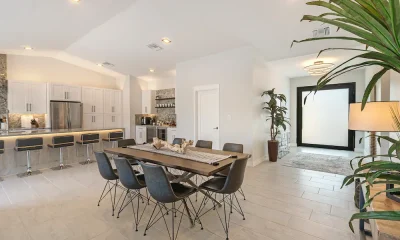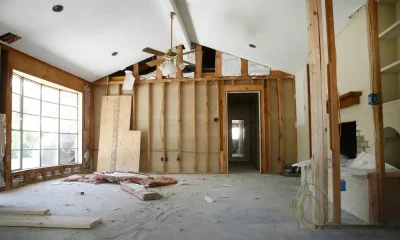Renovation
DIY Guide: Building A New Bathroom In 2024

It’s a new year and a great time to get your DIY skills to work. Renovating homes is costly, especially in bathrooms and kitchens, which are the most used home areas. You walk into your bathroom and finally decide you’ve had enough.
Having family over during the holidays blindsided you for a bit, but you can put things into perspective now that everything’s settled down. Your bathroom is a total mess; cleaning it won’t solve anything. A quick call to your plumber confirms what you already know: Building a new bathroom is your only option.
Bathroom Renovation Guide
The cost of a new bathroom may scare you away, but you can limit your spending by doing most of the hard work yourself. Bathroom remodelling can be tricky to handle alone, as it is a project in the home improvement niche. Still, we’ve made things easier with this complete step-by-step guide for do-it-yourself renovations. Let’s begin!
1. Set Out Your Tools
Without the right tools, you’ll find yourself neck-deep in murky waters before you know it. A quick trip to your hardware store will solve the problem if you don’t have any tools. Some of the tools you’ll need for your new bathroom project include:
- Gloves
- Adjustable wrenches
- Screwdrivers
- Safety goggles
- Pliers
- Pipe/Tube cutters
- Drills
- Plungers
2. Identify Your Design Plan
There are many bathroom remodelling tips for DIYers to explore. These 2022 bathroom design ideas include the best layout for small toilets and walk-in showers. You must choose a cost-effective method for renovation projects based on your bathroom layout.
3. Remove Bathroom Fixtures
Start by stripping the existing bathroom of all its plumbing fixtures and fittings. At this point, it’s important to note that you’ll need to adhere to all safety precautions.
Before removing anything in your existing layout, ensure that you’ve shut off the water coming in from the pipes and removed and drained out the toilet. This will prevent any sudden spills that can disrupt your work.
4. Install New Fixtures
Now that you have a clear outlook on what you want your bathroom to look like, you can begin the actual work.
One of the best things about a bathroom remodel is that most pipes have already been placed, so you won’t need to worry about those unless you make any significant changes. You can also check out trendy tips for different bathroom layouts if you remodel family bathrooms or a small space.
Suppose you’re ditching the regular bathtub in your old bathroom for a freestanding bath or walk-in shower. In that case, you must follow your manufacturer’s installation guide.
Plumbing work can be tricky, and we recommend following your expert’s advice to the letter, even for mundane things like cabinets or a heated towel rail.
5. Work On New Flooring
Most bathrooms use tile flooring, but you can decide to do something more DIY-friendly. Check your subfloor before working on your floor space to ensure no issues.
Your bathroom must be durable enough to handle constant foot traffic and moisture, so you may need to remove the old material when remodeling.
Installing or laying flooring will take up much of your time, even if you have a small bathroom. Please have someone to help out with this process. The ideal subfloor is two stacks of thick plywood placed atop each other, and you’ll also need some concrete if you’re going with natural stone tiles. Don’t forget underfloor heating!
6. Fix The Walls
This is one of the final steps to complete bathroom installation. If you’re not installing wall tiles, you’ll need a smooth surface, especially if you want a glossy finish. Acrylic material is also a good choice for your shower walls because it is durable and easy to install. Check out some bathroom wall ideas and pick which resonates best with your décor.
7. Sinks, Faucets, and Everything In Between
You can install your sinks and faucets after fixing your walls and shower enclosure. You can also bring in a new vanity, wall-mounted taps, cabinets, mirrors, and other accessories to hang on your bathroom walls. Your bathroom should be taking shape already!
Caveat emptor: A certified plumber and electrician were required to do the wiring and pipework and install the shower, bath, taps, and toilet. What’s most important is water-tightness, and getting advice on achieving it will set you up to succeed with a dry, mould-free bathroom.
8. Clean Up
Now that you’ve done all the hard work, it’s time to see results! Clear out all the dirt and include any extra décor you missed.
Reconnect your pipes and test run to see if everything is in order. If you’ve chosen to install new bathroom lighting, turn on the lights to showcase your bathroom design!
Finally…
Congratulations! You’ve done it—and all by yourself! All that’s left is enjoying a warm bath in your dream bathroom. You’ve earned it!






